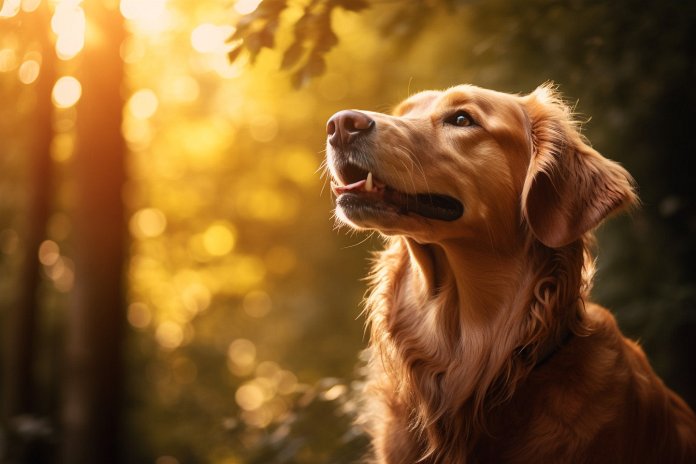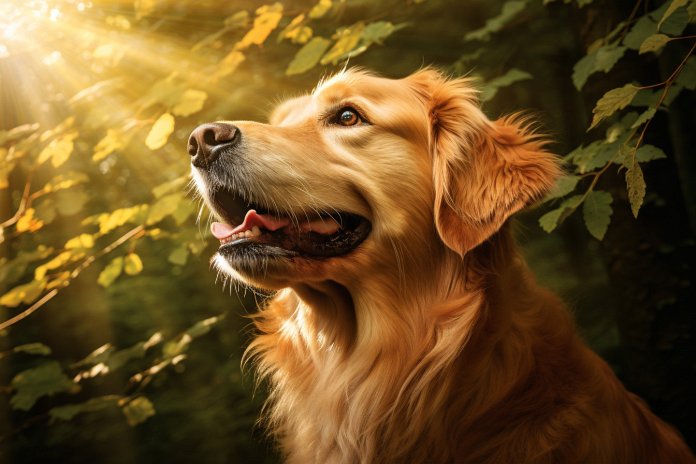
Flynn, the Bichon Frise, won the Westminster Dog Show this year. This adorable white dog captured the hearts of people all over the country and made television appearances as the Best in Show for 2018. It’s hard not to admire this graceful and charming performer who seemed confident in the spotlight.
Signs a Dog Feels Admired
Dogs are great communicators, especially if we pay attention to their body language, disposition, and behavior in different contexts. Just like with humans, body language provides powerful signals for communication.
There are nonverbal signals that you and your dog exchange that communicate the positive feelings you share. Dogs are reactive in the moment, so it’s important to understand their signals. Your dog depends on you for shelter, food, exercise, and security, and your positive interactions strengthen your relationship.
Dogs that are admired and cared for appear confident. They stand tall with their tail straight, and their mouth is open with their tongue hanging out. They pay attention to their owner and are alert. Your dog may look at you and stare to let you know they want your attention. When you spend relaxing time with your dog, you may notice signs of submission, such as blinking and yawning.
The ears can tell you a lot about what your dog is thinking. A relaxed dog has relaxed ears, while alert dogs have their ears up. If your dog’s ears are pulled back slightly, it’s a signal that they want attention.
You communicate admiration to your dog in many ways. You may speak in sweet tones, pet them, give them treats, and make them comfortable. In return, your dog shows affection and loyalty, and responds to your signals and commands.
Dogs seem to react to the energy level in the room. If you’re agitated, your dog may become more active and even protective. If you’re calm, your dog may snuggle in with you. If you’re feeling emotional and expressing love, your dog may respond by coming to you, letting you pet them, and staying close.
Body Language
Signs that your dog is feeling admired include:
– Being alert
– Yawning
– Ears back
– Blinking
– Tongue hanging
Other Signs
Other cues your dog will give when they feel admired are:
– Responding to your emotional tone
– Listening to your commands
– Coming to you to show affection
The History of Humans Admiring Dogs
The bond between humans and dogs started centuries ago, most likely out of survival needs. Dogs helped humans locate prey and provided protection, while humans provided food and shelter.
Dogs have evolved to meet human needs, as we have selectively bred them to have skills that assist humans. Through this close relationship, humans have learned how to train and care for dogs. Dogs, in turn, have learned to understand and respond to our commands and training, becoming our loyal companions.
Dogs are instinctively pack animals and social creatures. As puppies, they are socialized to understand their place in the pack and learn acceptable behavior. They also learn that meeting our expectations brings positive rewards.
The Science of Dogs Understanding Your Admiration
Science has shown us that dogs can understand our emotions. Dogs use information from different senses to read human feelings. Researchers have found that dogs spend more time looking at faces when the vocalizations match the emotions expressed on those faces, both with dogs and humans.
Another study showed that the love hormone, oxytocin, increases when dogs see their owners’ faces. Dogs will even ignore danger to see their owner’s smile. This suggests that dogs recognize and understand when we show them love through admiration.
Training Your Dog for Admiration
Dog shows can be a fun experience, and you don’t need a purebred dog to participate. There are mixed breed dog shows available.
Show dogs have good showmanship, displaying good behavior in the ring and a strong relationship with their handler. They exude confidence when being judged. There are three important behaviors your dog must excel at: “Gait,” “Stack,” and “Be Examined.” You can teach these behaviors through short training sessions using positive reinforcement.
Here are some steps to train your dog for showmanship:
1. Use a collar that is basically a loop with a short lead.
2. Use a clicker to signal that a reward is coming. Train your dog to respond to the clicker with a treat.
3. Teach your dog to “gait” by moving with you without looking at you. Use the clicker to train them to keep their face forward and give treats at the left side of your body. If they pull ahead, signal them to come back and start again.
4. Teach your dog to “stack” by having them stand and wait in the proper position on their own. Use treats to reward them as they stand and allow you to position them correctly. Start with the front legs and then position the rear legs. Once they learn to stand, teach them to “stay” through repeated practice.
5. Practice “examination” by handling your dog’s body daily. Say “mouth please” when examining their mouth. Once your dog is comfortable with your handling, practice with other people touching them.
Many clubs offer events and classes to help you have fun showing your dog, regardless of their breed.
“Admiring our dogs strengthens our bond and enhances their confidence.”

Tips & Things to Know
1️⃣ Understanding Your Dog’s Body Language: Your dog communicates through body language. Signs of feeling admired can include standing tall with tail straight, ears pulled back slightly for attention, and open mouth with tongue hanging out. They may also exhibit signs of submission like blinking and yawning. By understanding these signs, you can better understand and respond to your dog’s needs and feelings.
2️⃣ Dogs Respond to Your Emotions: Dogs are very perceptive and can pick up on your emotional state. If you’re agitated, your dog may act more active and protective. If you’re calm, your dog may snuggle closer. When expressing love and admiration, your dog may respond by coming closer to you, indicating their affection and appreciation.
3️⃣ Training Your Dog for Admiration: If you’re interested in dog shows, training your dog for admiration can be a fun experience. There are three key behaviors for show dogs: “Gait”, “Stack”, and “Be Examined”. These can be taught through short training sessions using positive reinforcement, a collar, and a clicker. Remember, though, that whether or not your dog is a show dog, your admiration and affection strengthens your bond.
Frequently Asked Questions, Answered ✅
1. What are some signs that a dog feels admired?
– Dogs who are admired and cared for look confident, stand tall with their tail straight, have an open mouth with the tongue hanging, are attentive and alert to their owner, and may blink and yawn when relaxing and being admired.
2. How can you communicate admiration to your dog?
– You can communicate admiration to your dog by speaking in sweet tones, petting them, providing treats, and making them comfortable.
3. How do dogs react to the energy level in the room?
– Dogs tend to react to the energy level in the room. They may act more active and protective if you are agitated, snuggle in with you if you are calm, and respond with affection if you are feeling emotional and expressing love.
4. How did the human and canine bond form?
– The human and canine bond started centuries ago out of survival needs. Dogs assisted humans in locating hunts and providing protection, while humans provided food and shelter.
5. What are some tips for training your dog for admiration?
– Some tips for training your dog for admiration include using positive reinforcement, teaching behaviors like gaiting, stacking, and being examined, and practicing handling your dog’s body regularly. Many clubs also have events and classes for amateurs to have fun showing their dogs.